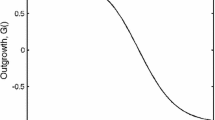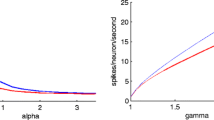Abstract
All higher order central nervous systems exhibit spontaneous neural activity, though the purpose and mechanistic origin of such activity remains poorly understood. We quantitatively analyzed the ignition and spread of collective spontaneous electrophysiological activity in networks of cultured cortical neurons growing on microelectrode arrays. Leader neurons, which form a mono-synaptically connected primary circuit, and initiate a majority of network bursts were found to be a small subset of recorded neurons. Leader/follower firing delay times formed temporally stable positively skewed distributions. Blocking inhibitory synapses usually resulted in shorter delay times with reduced variance. These distributions are characterizations of general aspects of internal network dynamics and provide estimates of pair-wise synaptic distances. The resulting analysis produced specific quantitative constraints and insights into the activation patterns of collective neuronal activity in self-organized cortical networks, which may prove useful for models emulating spontaneously active systems.









Similar content being viewed by others
References
Artola, A., & Singer, W. (1994). NMDA receptors and developmental plasticity in visual neocortex. In G. L. Collingridge & J. C. Watkins (Eds.), The NMDA receptor (pp. 313–339). London: Oxford UP.
Beggs, J. M., & Plenz, D. (2004). Neuronal avalanches are diverse and precise activity patterns that are stable for many hours in cortical slice cultures. Journal of Neuroscience, 24, 5216–5229.
Ben-Ari, Y. (2001). Developing networks play a similar melody. Trends in Neurosciences, 24, 353–360.
Bettencourt, L. M. A., Stephens, G. J., Ham, M. I., & Gross, G. W. (2007). The functional structure of cortical neuronal networks grown in vitro. Physical Review, E, 75, 021915.
Bliss, T. V., & Collingridge, G. L. A. (1993). A synaptic model of memory: Long-term potentiation in the hippocampus. Nature, 361, 31–39.
Corner, M. A., van Pelt, J., Wolters, P. S., Baker, R. E., & Nuytinck, R. H. (2002). Physiological effects of sustained blockade of excitatory synaptic transmission on spontaneously active developing neuronal networks—An inquiry into the reciprocal linkage between intrinsic biorhythms and neuroplasticity in early ontogeny. Neuroscience and Biobehavioral Reviews, 26, 127–185.
Curtis, D. R., Duggan, A. W., Felix, D., & Johnston, F. A. R. (1970). GABA, bicuculline and central inhibition. Nature, 226, 1222–1224.
Darbon, P., Scicluna, L., Tscherter, A., & Streit, J. (2002). Mechanisms controlling bursting activity induced by disinhibition in spinal cord networks. European Journal of Neuroscience, 15, 671–683.
DeMarse, T. B., Wagenaar, D. A., Blau, A. W., & Potter, S. M. (2001). The neurally controlled animat: Biological brains acting with simulated bodies. Autonomous Robots, 11, 305–310.
Droge, M. H., Gross, G. W., Hightower, M. H., & Czisny, L. E. (1986). Multielectrode analysis of coordinated, multisite, rhythmic bursting in cultured CNS monolayer networks. Journal of Neuroscience, 6, 1583–1592.
Eytan, D., & Marom, S. (2006). Dynamics and effective topology underlying synchronization in networks of cortical neurons. Journal of Neuroscience, 26, 8465–8476.
Feinerman, O., Segal, M., & Moses, E. (2007). Identification and dynamics of spontaneous burst initiation zones in unidimensional neuronal cultures. Journal of Neurophysiology, 97(4), 2937–2948.
Grinvald, A., & Hildesheim, R. (2004). VSDI: A new era in functional imaging of cortical dynamics. Nature Reviews. Neuroscience, 5, 874–885.
Gross, G. W. (1994). Internal dynamics of randomized mammalian neuronal networks in culture. In D. A. Stenger & T. M. McKenna (Eds.), Enabling technologies for cultured neural networks (pp. 277–317). New York: Academic.
Gross, G. W., & Kowalski, J. M. (1999). Origins of activity patterns in self-organizing neuronal networks in vitro. Journal of Intelligent Material Systems and Structures, 10, 558–564.
Gross, G. W., & Schwalm, F. U. (1994). A closed flow chamber for long-term multichannel recording and optical monitoring. Journal of Neuroscience Methods, 52(1), 73–85.
Gross, G. W., Wen, W. Y., & Lin, J. W. (1985). Transparent indium–tin oxide electrode patterns for extracellular, multisite recording in neuronal cultures. Journal of Neuroscience Methods, 15(3), 243–252.
Jimbo, Y., Robinson, H. P. C., & Kawana, A. (1998). Strengthening of synchronized activity by tetanic stimulation in cortical cultures: Application of planar electrode arrays. IEEE Transactions on Biomedical Engineering, 45, 1297–1304.
Jimbo, Y., Tateno, T., & Robinson, H. P. C. (1999). Simultaneous induction of pathway-specific potentiation and depression in networks of cortical neurons. Biophysical Journal, 76, 670–678.
Kamioka, H., Maeda, E., Jimbo, Y., Robinson, H. P. C., & Kawana, A. (1996). Spontaneous periodic synchronized bursting during formation of mature patterns of connections in cortical cultures. Neuroscience Letters, 206, 109–112.
Katz, L. C., & Shatz, C. J. (1996). Synaptic activity and the construction of cortical circuits. Science, 274, 1133–1138.
Keefer, E. W., Gramowski, A., & Gross, G. W. (2001). NMDA receptor-dependent periodic oscillations in cultured spinal cord networks. Journal of Neurophysiology, 86, 3030–3042.
Leinenkugel, X., Khazipov, R., Cannon, R. C., Hirase, H., Ben Ari, Y., & Buzsaki, G. (2002). Correlated bursts of activity in the neonatal hippocampus in vivo. Science, 296, 2049–2052.
Maeda, E., Robinson, H. P. C., & Kawana, A. (1995). The mechanisms of generation and propagation of synchronized bursting in developing networks of cortical neurons. Journal of Neuroscience, 15, 6834–6845.
Marom, S., & Shahaf, G. (2002). Development, learning and memory in large random networks of cortical neurons: Lessons beyond anatomy. Quarterly Reviews of Biophysics, 35, 63–87.
Meister, M., Wong, R. O. L., Baylor, D. A., & Shatz, C. J. (1991). Synchronous bursts of action potentials in ganglion cells of the developing mammalian retina. Science, 252, 939–943.
Nakanishi, K., & Kukita, F. (1998). Functional synapses in synchronized bursting of neocortical neurons in culture. Brain Research, 795, 137–146.
Provine, R. R. (1979). “Wing-flapping” develops in wingless chicks. Behavioral and Neural Biology, 27, 233–237.
Puopolo, M., & Belluzzi, O. (2001). NMDA-dependent, network-driven oscillatory activity induced by bicuculline or removal of Mg2+ in rat olfactory bulb neurons. European Journal of Neuroscience, 13, 92–102.
Ramakers, G. J. A., Van Galen, H., Feenstra, M. G. P., Corner, M. A., & Boer, G. J. (1994). Activity-dependent plasticity of inhibitory and excitatory amino acid transmitter systems in cultured rat cerebral cortex. International Journal of Developmental Neuroscience, 12, 611–621.
Selinger, J. V., Pancrazio, J. J., & Gross, G. W. (2004). Measuring synchronization in neuronal networks for biosensor applications. Biosensors & Bioelectronics, 19(7), 675–683.
Shahaf, G., & Marom, S. (2001). Learning in networks of cortical neurons. Journal of Neuroscience, 21, 8782–8788.
Spitzer, N. C. (2006). Electrical activity in early neuronal development. Nature, 444, 707–712.
Takikawa, Y., Kawagoe, R., & Hikosaka, O. (2002). Reward-dependent spatial selectivity of anticipatory activity in monkey caudate neurons. Journal of Neurophysiology, 87, 508–515.
Van Pelt, J., Wolters, P. S., Corner, M. A., Rutten, W. L. C., & Ramakers, G. J. A. (2004). Long-term characterization of firing dynamics of spontaneous bursts in cultured neural networks. IEEE Transactions on Biomedical Engineering, 51(11), 2051–2062.
Wagenaar, D. A., Pine, J., & Potter, S. M. (2006). An extremely rich repertoire of bursting patterns during the development of cortical cultures. BMC Neuroscience, 7, 11.
Wagenaar, D. A., Radhika, M., Pine, J., & Potter, S. M. (2005). Controlling bursting in cortical cultures with closed-loop multi-electrode stimulation. Journal of Neuroscience, 25, 680–688.
Zhang, L. I., & Poo, M. M. (2001). Electrical activity and development of neural circuits. Nature Neuroscience, 4, S1207–S1214.
Acknowledgements
This project supported by LDRD-ER-20050411, and in part by the Texas Advanced Technology Program.
Author information
Authors and Affiliations
Corresponding author
Additional information
Action Editor: Peter Latham
Rights and permissions
About this article
Cite this article
Ham, M.I., Bettencourt, L.M., McDaniel, F.D. et al. Spontaneous coordinated activity in cultured networks: Analysis of multiple ignition sites, primary circuits, and burst phase delay distributions. J Comput Neurosci 24, 346–357 (2008). https://doi.org/10.1007/s10827-007-0059-1
Received:
Revised:
Accepted:
Published:
Issue Date:
DOI: https://doi.org/10.1007/s10827-007-0059-1




